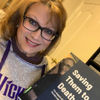UPDATE FROM HHCS INFECTION PREVENTION AND CONTROL BUILDING DESIGN TASK FORCE
- Mary Nichols

- Feb 27, 2024
- 3 min read

We were begging to get inside the buildings in 2020 but this task force is formulating recommendations regarding the design of future buildings to prevent that. It. Is. So. Surreal.
Texas Caregivers for Compromise is privileged to be a part of this planning group appointed by Texas HHSC in November 2021 as a result of a September of 2020 Coronavirus Commission on Safety and Quality in Nursing Homes report related to COVID-19 in nursing homes and success/failure of various prevention and mitigation efforts.
The task force is chaired by Kevin Knippa, Senior Policy Specialist in Licensing & Policy Operations and Long-term Care Regulation at HHSC. Other members include various people from HHSC, nursing home owners, HVAC and building, plumbling, and construction experts, Patty Ducayet, and several other people whose names and faces escape me. Actually, I might not be able to put the face and name together even if they didn't escape me.
The job of the task force is complex and based on a recommendation in the report to “establish a task force jointly led by industry, safety and consumer organizations to identify long term priorities for elder care in the United States with emphasis on the redesign, retrofitting, and reconfiguration of nursing homes to be resilient to infectious disease threats. The task force has been looking at the feasibility of considerations like:
• The ability to separate wings for cohorting
• Separate entrances and exits
• Separate areas for staff and restrooms
• Separate areas to put on and remove PPE
• UV systems for decontamination
• HVAC upgrades and retrofitting
• Design that take resident quality of life into consideration
Most of that is meant for new builds and while nothing is finalized, we have discussed recommendations with regard to future facilities. But some of that is difficult for existing facilities so this past week, we (the task force) focused specifically on issues that pertain to the air quality, risk management, infection prevention, and infection mitigation and control in existing facilities. The task force looked at four goals for existing nursing homes:
Address infectious disease in their emergency plans
Manage their ventilation to the highest and most effective degree possible
Have an operating plan in place for airborne exposure during an infectious agent outbreak
Have a water management program that identifies hazardous conditions and prevents growth and transmission of waterborne pathogens
If you’ve been in very old nursing homes, you know that smell when it cannot manage the indoor humidity. But you may not notice if there is no ventilation or clean air flow in certain areas if the facility is squeaky clean and the temperature is comfortable. All are conditions that allow bacteria and viruses to make themselves comfortable in our nursing homes and eventually harm our loved ones.
So, the task force has discussed trying to minimize the need for redesign of existing facilities by addressing the highest air quality efficiency solutions possible and prevention of both airborne and waterborne diseases.
If you would like an informal and very unofficial UNADOPTED copy of our notes and suggestions, email me at TexasCaregiversforCompromise@yahoo.com
We are Texas Caregivers for Compromise and we are #notgoingaway!
photo is my mother in bed by an open window pre-COVID. During COVID, open windows were prohibited in many facilities because it disrupted the air quality measurements.




Comments